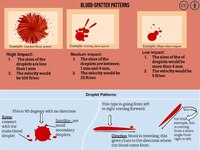
Photo from wikipedia
Recent advances in next-generation sequencing technologies (NGS) coupled with machine learning have demonstrated the potential of microbiome-based analyses in applied areas such as clinical diagnostics and forensic sciences. Particularly in… Click to show full abstract
Recent advances in next-generation sequencing technologies (NGS) coupled with machine learning have demonstrated the potential of microbiome-based analyses in applied areas such as clinical diagnostics and forensic sciences. Particularly in forensics, microbial markers in biological stains left at a crime scene can provide valuable information for the reconstruction of crime scene cases, as they contain information on bodily origin, the time since deposition, and donor(s) of the stain. ABSTRACT Recent advances in next-generation sequencing technologies (NGS) coupled with machine learning have demonstrated the potential of microbiome-based analyses in applied areas such as clinical diagnostics and forensic sciences. Particularly in forensics, microbial markers in biological stains left at a crime scene can provide valuable information for the reconstruction of crime scene cases, as they contain information on bodily origin, the time since deposition, and donor(s) of the stain. Importantly, microbiome-based analyses provide a complementary or an alternative approach to current methods when these are limited or not feasible. Despite the promising results from recent research, microbiome-based stain analyses are not yet employed in routine casework. In this review, we highlight the two main gaps that need to be addressed before we can successfully integrate microbiome-based analyses in applied areas with a special focus on forensic casework: one is a comprehensive assessment of the method’s strengths and limitations, and the other is the establishment of a standard operating procedure. For the latter, we provide a roadmap highlighting key decision steps and offering laboratory and bioinformatic workflow recommendations, while also delineating those aspects that require further testing. Our goal is to ultimately facilitate the streamlining of microbiome-based analyses within the existing forensic framework to provide alternate lines of evidence, thereby improving the quality of investigations.
Journal Title: Applied and Environmental Microbiology
Year Published: 2023
Link to full text (if available)
Share on Social Media: Sign Up to like & get
recommendations!